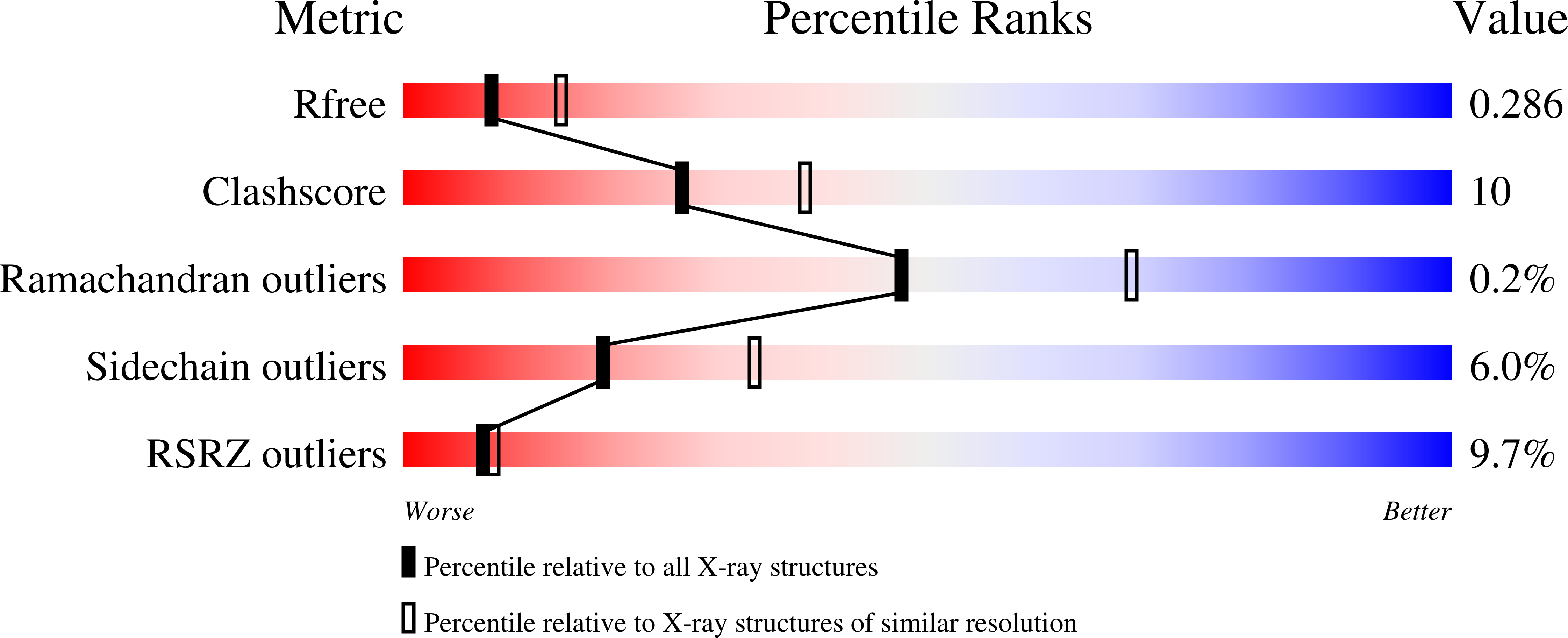Innovative C 2 -symmetric testosterone and androstenedione dimers: Design, synthesis, biological evaluation on prostate cancer cell lines and binding study to recombinant CYP3A4.
Paquin, A., Oufqir, Y., Sevrioukova, I.F., Reyes-Moreno, C., Berube, G.(2021) Eur J Med Chem 220: 113496-113496
- PubMed: 33933755
- DOI: https://doi.org/10.1016/j.ejmech.2021.113496
- Primary Citation of Related Structures:
7LXL - PubMed Abstract:
The synthesis of two isomeric testosterone dimers and an androstenedione dimer is reported. The design takes advantage of an efficient transformation of testosterone leading to the synthesis of the key diene, 7α-(buta-1,3-dienyl)-4-androsten-17β-ol-3-one, through an elimination reaction. It was found that in some instances the same reaction led to partial epimerization of the 17β-hydroxyl group into the 17α-hydroxyl group. The specific orientation of the hydroxyl function was confirmed by NMR spectroscopy. Capitalizing on this unforeseen side reaction, several dimers were assembled using an olefin metathesis reaction with Hoveyda-Grubbs catalyst. This led to the formation of two isomeric testosterone dimers with 17α-OH or 17β-OH (14α and 14β) as well as an androstenedione dimer (14). The new dimers and their respective precursors were tested on androgen-dependent (LNCaP) and androgen independent (PC3 and DU145) prostate cancer cells. It was discovered that the most active dimer was made of the natural hormone testosterone (14β) with an average IC 50 of 13.3 μM. In LNCaP cells, 14β was ∼5 times more active than the antiandrogen drug cyproterone acetate (IC 50 of 12.0 μM vs. 59.6 μM, respectively). At low concentrations (0.25-0.5 μM), 14α and 14β were able to completely inhibit LNCaP cell growth induced by testosterone or dihydrotestosterone. Furthermore, cross-reactivity of androgen-based dimers with sterol-metabolizing cytochrome P450 3A4 was explored and the results are disclosed herein.
Organizational Affiliation:
Département de Chimie, Biochimie et Physique, Université Du Québec à Trois-Rivières, C.P. 500, Trois-Rivières, QC, G9A 5H7, Canada; Groupe de Recherche en Signalisation Cellulaire, Université Du Québec à Trois-Rivières, C.P. 500, Trois-Rivières, QC, G9A 5H7, Canada. Electronic address: Alexis.Paquin@uqtr.ca.
















